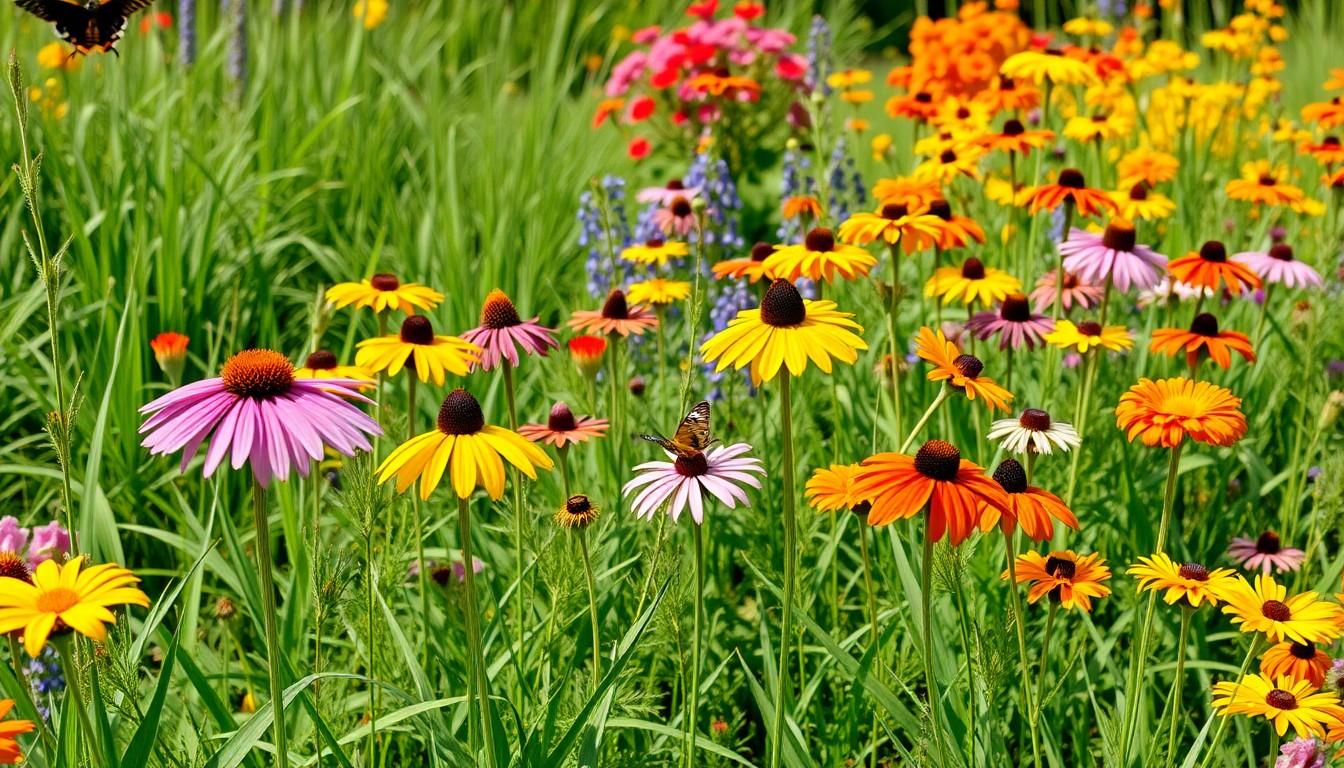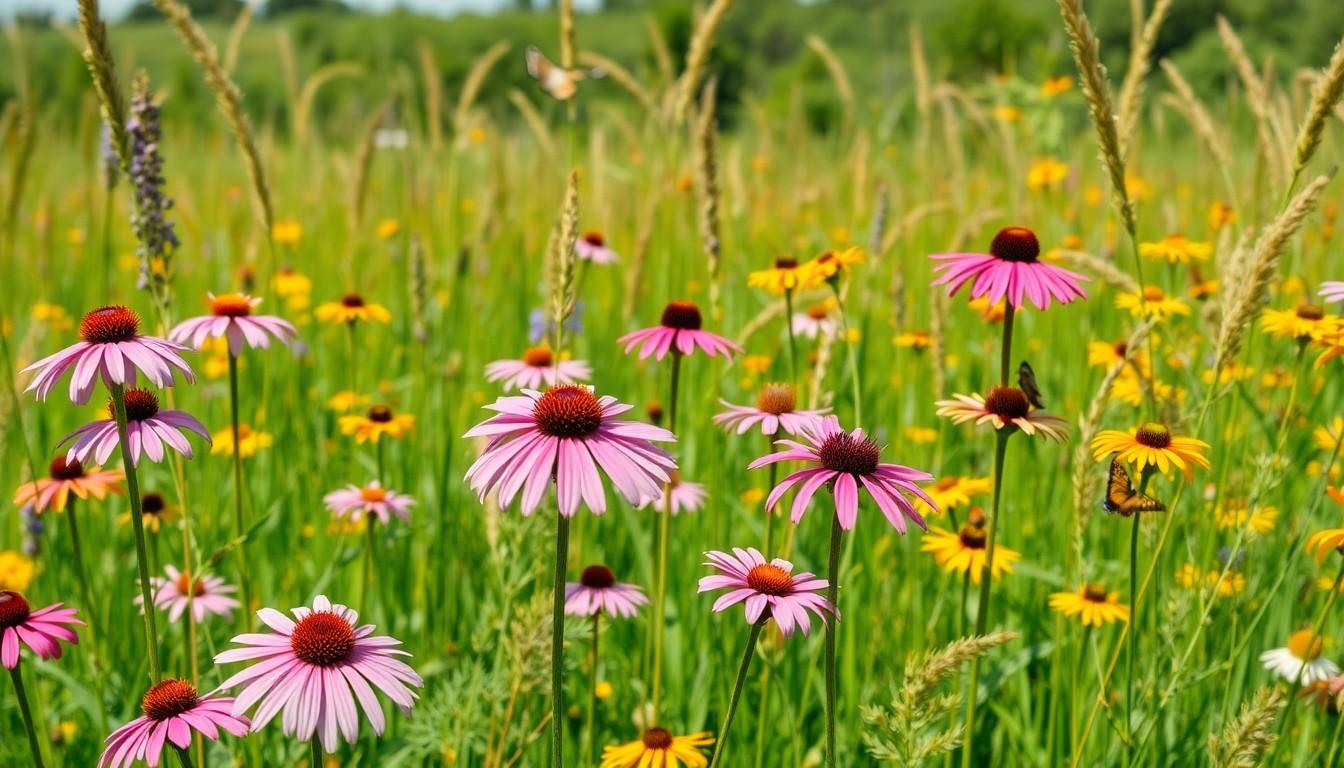The Best Fluffy Pancakes recipe you will fall in love with. Full of tips and tricks to help you make the best pancakes.

Native Plants Minnesota: Transform Your Garden and Save the Environment
In the land of 10,000 lakes, Minnesota’s native plants are the unsung heroes of the ecosystem. These hardy flora not only bring beauty to the landscape but also support local wildlife and enhance biodiversity. Who wouldn’t want to transform their yard into a vibrant oasis while giving Mother Nature a high-five?
Imagine a garden filled with colorful wildflowers, lush grasses, and resilient shrubs that thrive without constant pampering. It’s like hosting a party where the guests bring their own snacks! By choosing native plants, gardeners can create a low-maintenance paradise that’s both eco-friendly and visually stunning. So let’s dive into the world of Minnesota’s native plants and discover how they can turn any green space into a flourishing haven.
Importance Of Native Plants In Minnesota
Native plants play a vital role in sustaining Minnesota’s environment. They offer numerous ecological and economic advantages.
Ecological Benefits
Native plants support local wildlife by providing food and habitat. Birds, butterflies, and pollinators thrive in areas lush with native flora. These plants also require less water and fertilizer, promoting water conservation. Healthy soils emerge from native root systems, which reduce erosion and improve nutrient cycling. In turn, diverse ecosystems strengthen ecosystem resilience against pests and diseases. Indigenous plant species contribute to enhanced biodiversity, supporting the overall stability of the environment.
Economic Advantages
Investing in native plants can lead to reduced landscaping costs. Once established, these plants require minimal maintenance, resulting in lower watering and fertilization expenses. Additionally, native gardens increase property value due to their unique beauty. They attract environmentally conscious buyers interested in sustainable landscaping. Local nurseries and garden centers benefit from the demand for native species, supporting local economies. By choosing native plants, homeowners support ecosystem-friendly practices that enrich Minnesota’s natural heritage.
Common Native Plants In Minnesota

Minnesota boasts a variety of native plants that thrive in its unique climates. These species contribute to the local ecosystem and provide stunning landscapes.
Flowering Plants
Wildflowers such as purple coneflower and black-eyed Susan thrive across Minnesota’s prairies and gardens. Each flower brings vibrant colors and attracts beneficial insects. Prairie smoke, with its unique feathery seed heads, adds texture to the landscape. Additionally, butterfly milkweed serves as a host for monarch larvae, making it essential for supporting native butterfly populations. Other flowering plants, including woodland phlox and liatris, provide seasonal interest and can flourish in various soil types.
Grasses and Sedges
Native grasses like big bluestem and little bluestem form the backbone of Minnesota’s prairies. These grasses provide habitat and food for a diverse range of wildlife. Switchgrass, known for its tall stature, offers excellent erosion control and adds beauty to natural landscapes. Similarly, sedges such as carex pensylvanica thrive in moist woodlands and help stabilize soil. Each of these plants contributes to water management by reducing runoff and promoting groundwater recharge.
Cultivating Native Plants
Cultivating native plants enhances Minnesota’s biodiversity. By following specific guidelines, gardeners can create thriving landscapes.
Best Practices For Planting
Select appropriate native species for your site conditions. Preparing the soil ensures optimal growth; loosen it to improve drainage. Plant during the spring or fall when temperatures are cooler. Water the plants deeply after planting to encourage root development. Group plants with similar moisture and light needs together. This method promotes healthy interactions and reduces competition.
Care and Maintenance Tips
Watering should occur during dry spells, ensuring plants receive 1 inch of water weekly. Mulching around plants helps retain moisture while suppressing weeds. Fertilizer is rarely necessary if the soil is healthy; native plants adapt to local conditions. Periodically remove dead plants and debris to support healthy growth. Monitoring for pests or diseases ensures that any issues are addressed promptly. Embrace natural processes, allowing plants to evolve with their surroundings.
Challenges Facing Native Plants In Minnesota
Native plants in Minnesota face significant challenges that threaten their survival and ecological roles. Awareness of these challenges is essential for conservation efforts.
Invasive Species
Invasive species pose a notable threat to Minnesota’s native plants. They can outcompete native flora for resources such as sunlight, water, and nutrients. Certain aggressive species like garlic mustard and buckthorn have established dominance in many areas, drastically reducing native plant populations. These invasives disrupt habitats, leading to declines in local wildlife dependent on native plants for food and shelter. Effective management strategies are necessary to control invasive species and protect the integrity of Minnesota’s ecosystems.
Climate Change
Climate change significantly impacts native plants in Minnesota. Altered precipitation patterns lead to fluctuations in water availability, affecting plant health and growth. Higher temperatures can shift suitable habitats for native species, forcing them to adapt or migrate to cooler areas. Increased frequency of extreme weather events, such as droughts and heavy storms, puts additional stress on these plants. Understanding and addressing these climate-related challenges are crucial for preserving Minnesota’s diverse native flora.
Resources For Learning About Native Plants
Numerous resources exist for those interested in learning about native plants in Minnesota. These can help gardeners and nature enthusiasts alike to deepen their knowledge and appreciation of the region’s flora.
Local Gardening Clubs
Local gardening clubs provide valuable opportunities for individuals to connect with fellow plant enthusiasts. Members often share insights on native plants suited to Minnesota’s climate. Workshops and events focus on plant identification, gardening techniques, and ecological practices. Joining these clubs connects individuals to a network of support, fostering a deeper understanding of local biodiversity. Many clubs also organize field trips to native plant gardens, enriching members’ experiences through hands-on learning.
Online Databases and Guides
Online databases and guides serve as invaluable tools for learning about Minnesota’s native plants. Websites such as the Minnesota Department of Natural Resources offer extensive information on various species and their habitats. Interactive features help users identify plants based on specific criteria. Such platforms provide educational materials, including articles and plant profiles that highlight ecological benefits. Social media groups and forums also exist, allowing individuals to seek advice and share their gardening experiences. Utilizing these resources empowers enthusiasts to make informed decisions about native plant cultivation.
Conclusion
Embracing native plants in Minnesota offers a unique opportunity to enhance both personal spaces and the environment. By choosing these species, individuals contribute to the health of local ecosystems while creating stunning gardens that thrive with minimal upkeep.
The benefits extend beyond aesthetics; native plants play a crucial role in supporting wildlife and promoting biodiversity. As gardeners adopt best practices for cultivation, they not only foster vibrant landscapes but also help combat the challenges posed by invasive species and climate change.
Engaging with local resources and communities further enriches this journey, allowing individuals to deepen their understanding and appreciation of Minnesota’s natural heritage. Ultimately, the movement toward native gardening reflects a commitment to sustainability and ecological balance.
